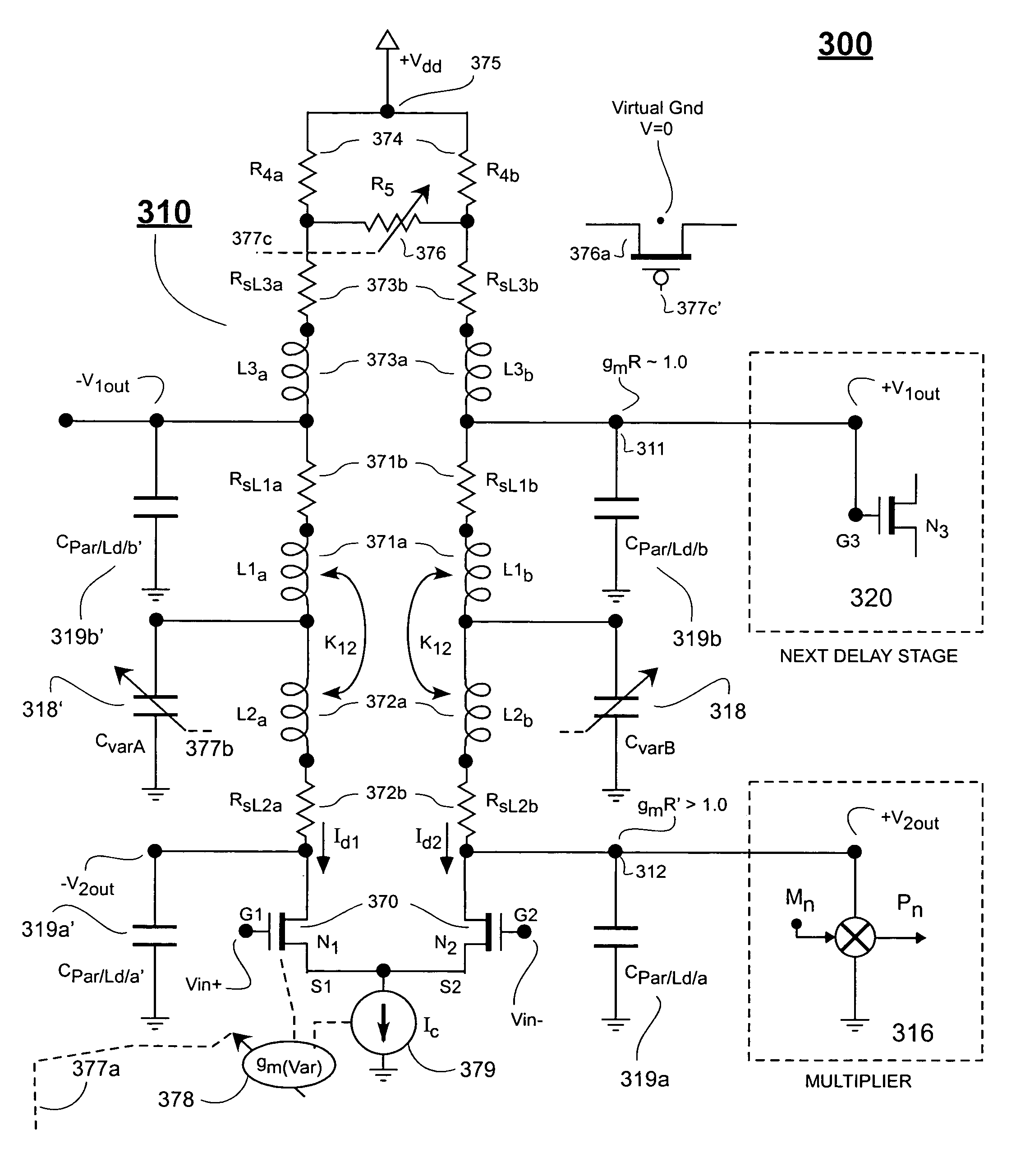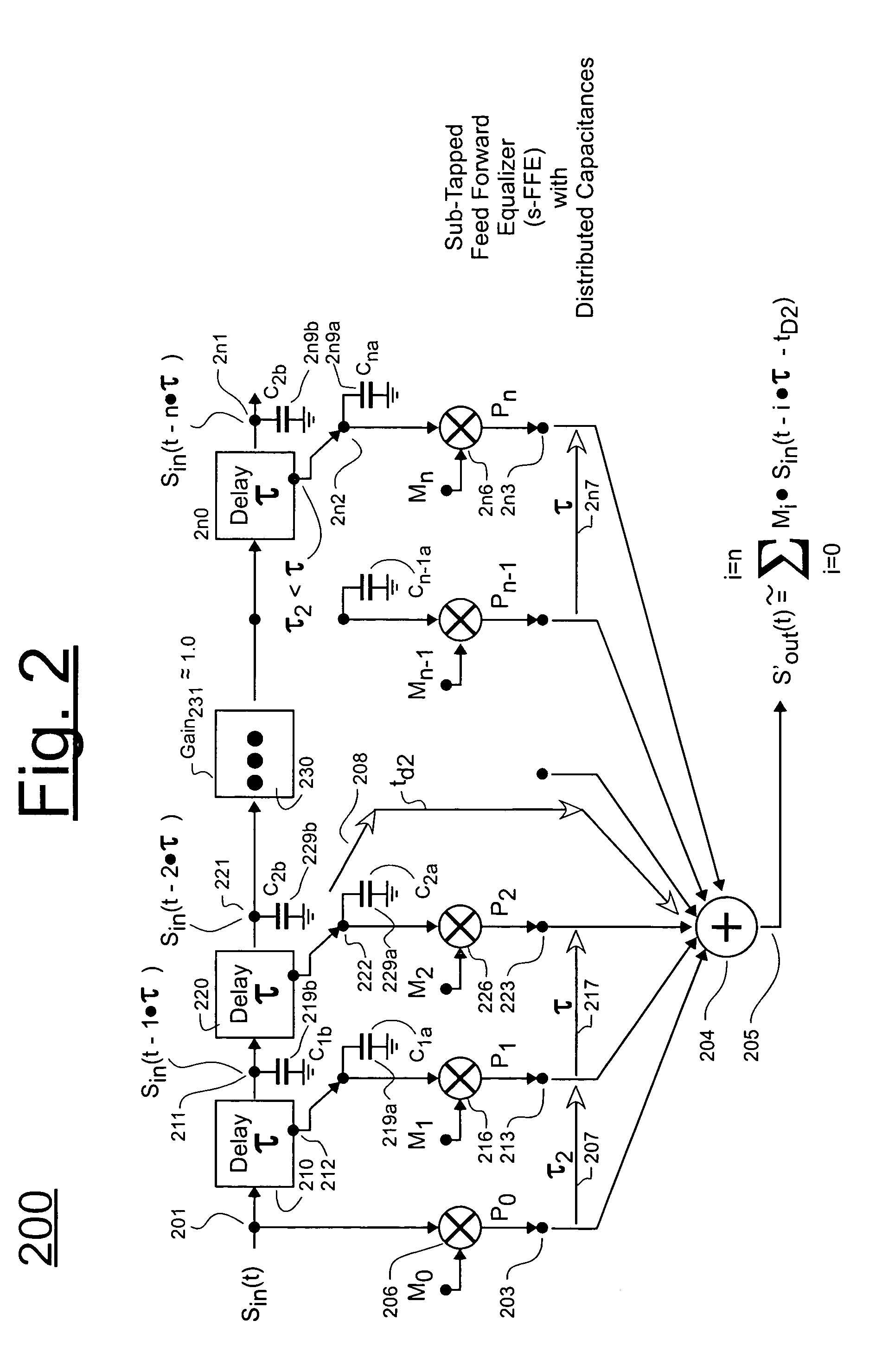Analog delay chain having more uniformly distributed capacitive loads and analog delay cell for use in chain
a capacitive load and analog delay technology, applied in the field of analog delay lines, to achieve the effect of reducing loading capacitance and widening frequency response rang
- Summary
- Abstract
- Description
- Claims
- Application Information
AI Technical Summary
Benefits of technology
Problems solved by technology
Method used
Image
Examples
Embodiment Construction
[0023]Referring to FIG. 1, an environment 100 in which cascaded delay cells may be employed is first described. Input signal Sin(t) may be a wide bandwidth communications signal such as that obtained from passing a series of substantially rectangular signal pulses through a transmission medium (e.g., a continuous fiber optic link) that exhibits signal dispersion. To correct for the dispersion, filtering is employed. In one embodiment, periodically delayed versions, Sin(t−i·T / k) of the input signal are generated, where i represents successive ones of a sequential series of whole numbers (0, 1, 2 . . . , n), k is a whole number such as 2 or 3, and τ=T / k, where T is a predefined symbol period. The periodically delayed versions of the input signal are respectively multiplied by independent weighting coefficients (Mi) and the resulting product signals (Pi) are added to produce an adaptively equalized output signal, Sout(t). Adaptive equalization may be carried out by changing the weighti...
PUM
 Login to View More
Login to View More Abstract
Description
Claims
Application Information
 Login to View More
Login to View More - R&D
- Intellectual Property
- Life Sciences
- Materials
- Tech Scout
- Unparalleled Data Quality
- Higher Quality Content
- 60% Fewer Hallucinations
Browse by: Latest US Patents, China's latest patents, Technical Efficacy Thesaurus, Application Domain, Technology Topic, Popular Technical Reports.
© 2025 PatSnap. All rights reserved.Legal|Privacy policy|Modern Slavery Act Transparency Statement|Sitemap|About US| Contact US: help@patsnap.com



